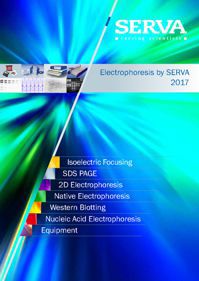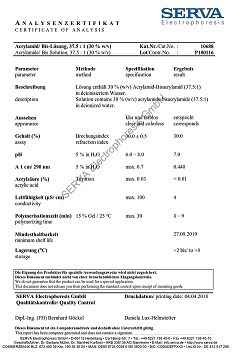Alkaline Phosphatase from calf intestine ca. 3000 U/mg protein (ca. 60 U/µl)solution
- Pack Sizes
- Certificates of Analysis (Lot.-no. - release date)
- PDF Documents
- Additional Information
- Related Products
- Product Links
EC 3.1.3.1. • Mr ca. 140 000 •
Alkaline phosphatase (ALP) preparation with highly specific activity, especially suitable for conjugation to antibodies and other proteins for ELISA, Western blotting, and histochemical detection (1). Compared to other enzyme conjugates, the substrate conversion reaction of alkaline phosphatase is linear, thus the sensitivity can be increased by a prolonged incubation time. ALP can also be an alternative for tissues with a high level of endogenous peroxidases, as the risk of substrate-related non-specific background staining is low.
The enzyme may also be used to dephosphorylate proteins and nucleic acids. To prevent self-ligation the 5′-termini of DNA or RNA are dephosphorylated with alkaline phosphatase. After dephosphorylation the nucleic acids can as well be tagged with radiolabeled phosphate by T4 polynucleotide kinase.
Alkaline phosphatase from calf intestine is a dimeric, membrane-derived glycoprotein. The enzyme is most stable in the pH range 7.5 - 9.5 and requires zinc, and magnesium or calcium divalent ions for activity.
In 40 % glycerol, containing 6 mM Tris/HCl, 6 mM MgCl2, 0.12 mM ZnCl2, pH ca. 7.6.
Unit definition: 1 U catalyzes the hydrolysis of 1 µmole of 4-nitrophenyl phosphate per minute at 37 °C, pH 9.8 (DEA buffer) (6).
Activity in other units: ca. 1100 U/mg at 25 °C, pH 9.6 (glycine buffer)
Substrates for Alkaline Phosphatase:
4-Nitrophenyl phosphate·Na2-salt (cat. no. 30770)
5-Bromo-4-chloro-3-indoxyl-phosphate-p-toluidine-salt (BCIP)
(cat. no. 15247)
Naphthol-AS-BI-phosphate (cat. no. 29988)
Naphthol-AS-MX-phosphate (cat. no. 30002)
1-Naphthyl phosphate·Na-salt (cat. no. 30130)
References:
- Chaconas, G. & van de Sande, J.H. (1980) Methods Enzymol. 65, 75-85
- Maxam, A.H. & Gilbert, W. (1980) Methods Enzymol. 65, 499-560
- Williams, D.G. (1984) J. Immunol. Methods 72, 261-8
- Harlow & Lane (1988) Antibodies, Cold Spring Harbor Laboratory Press, p. 349
- Garen, A. & Levinthal, C. (1960) Biochim. Biophys. Acta 38, 470-83
- Mössner, E. et al. (1980) Hoppe-Seyler's Z. Physiol. Chem. 361, 543-9
 |
| DANGER |
| Hazard Statements | H334 |
| Precautions | P261 - P285 |
| Reaction | P304 +P341 - P342 +P311 |
WGK: 1 • HS: 35079090
Storage Temperature: +2 °C to +8 °C














